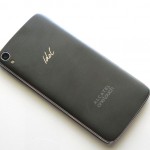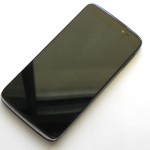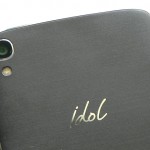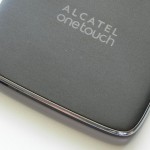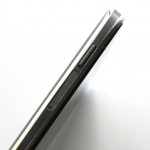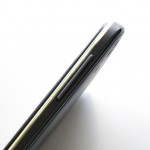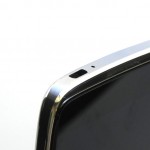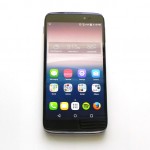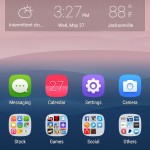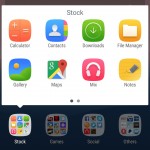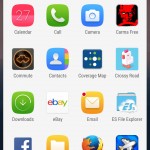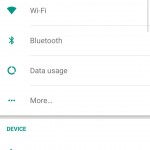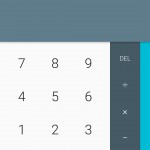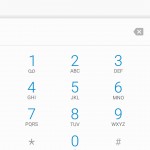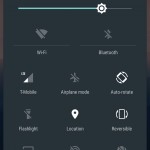Budget phones are getting better and better. ALCATEL’s ONETOUCH IDOL 3 is a great example of this, featuring great hardware at an impressive price.
Video Review
Availability and Price
The IDOL 3 is currently available for pre-order at a special launch price of $249.99, which is done through Amazon. After its May 21st launch, the price will increase by $30 to $279.99. If you’re used to on-contract prices, that may seem a bit much, though you have to remember that this is for a SIM-free, unlocked smartphone that’s perfectly compatible with T-Mobile and AT&T in the US.
Specs
As you’ll see below, the IDOL 3 has a hefty spec sheet.
- 5.5-inch 1080×1920 IPS display
- Qualcomm Snapdragon 615 octa-core CPU (1.5GHz/1GHz) + 2GB RAM
- 2910mAh battery
- 16GB internal storage (supports microSD cards up to 128GB)
- 4G LTE (bands 2/4/5/7/12/17), 3G (bands 2/4/5), 2G (bands 2/3/5/8)
- 802.11a/b/g/n Wi-Fi, Bluetooth 4.1, NFC
- Android 5.0.2 “Lollipop”
- 13MP rear-facing camera (1080p30FPS video recording)
- 8MP front-facing camera (1080p30FPS video recording)
- Dual front-facing speakers and microphones
- 6 inches tall, 3 inches wide, 0.3 inches thick
Design and Hardware
ALCATEL’s given the IDOL 3 a stylish design throughout, including plastic chrome trim on the front, back and even around the rear-facing camera. The plastic back cover (which can’t be removed) has a slick brushed aluminum texture to it. And by slick, I mean it really is slick to hold, offering very little grip. I’ve found the smartphone sliding out of my hand on a number of different occasions, making it very worrisome to use when out and about. Fortunately, there are many cases that can help with this.
Along the front is your front-facing camera, 5.5-inch screen and two front-facing speakers, powered by JBL. There are also multiple microphones, allowing you to use the phone upside-down and still be able to talk on the phone. This is an interesting feature that I haven’t seen on any other smartphone. You can read more about the audio quality from the speakers below. The volume buttons will even switch themselves around when using the phone in the opposite direction.
There’s a single volume rocker along the right side, which is easy to find and press, while the power button is along the left. You’ll find the 3.5mm headset jack on the top, while the USB 2.0 microUSB port is on the bottom. I would’ve much preferred seeing both on the bottom, as having two cables coming out of the device when using headphones and charging device (for example) can be odd to use in hand. Given the IDOL 3’s good battery life, you won’t be charging it much. And if you prefer the headset jack at the bottom, just flip the phone around and continue using it.
Build quality is quite good, with no plastic creaking noises whatsoever. It overall has a respectable amount of weight to it, making it not too light, but also not very heavy. If you’re used to holding 5.5-inch smartphones, this one is quite usable with one hand (though, as mentioned, the slippery back may make that difficult if you’re not being careful).
Speaker & Headphones
Perhaps the best feature of the IDOL 3 is its speakers. It’s still rare to find front-facing speakers, let alone decent rear or bottom-firing ones. Powered by JBL technology, the two speakers on the front of the IDOL 3 are simply great. While the clarity isn’t quite there (compared to HTC’s new One M9 smartphone), the volume certainly is (surprisingly much louder than the M9). There’s a subtle amount of surround sound, which combined with the loud volume make for a very pleasant listening experience. I found myself jamming to music for longer periods of time than originally planned.
While many smartphones come with included headphones (or earbuds) of sorts, they’re typically worth tossing. The IDOL 3 comes included with a pair of JBL-powered, ONETOUCH-branded earbuds, equipped with an integrated microphone and remote button. I found that the audio quality was quite respectable, and something that I could find myself using regularly. The cable itself is flat, which minimizes tangling. They’re also quite stylish and feel like they’re built to last.
Display
Also impressive is the IDOL 3’s display. It’s responsive, bright and has excellent viewing angles. As an added bonus, the display works relatively well outdoors. It isn’t the best when it comes to fighting against fingerprints, but I’ve yet to come across a smartphone display that is.
Software, Apps and Features
Loaded onto the IDOL 3 is Android 5.0.2, more commonly known as Lollipop. It’s mostly a stock flavor of Lollipop, meaning most of what you see and experience is what Google originally intended. ALCATEL added a few of their own touches, such as their own set of icons. If you’ve ever used a stock Android device, what the IDOL 3 delivers should be very familiar. And as this device doesn’t come straight from a carrier, there’s no bloatware to uninstall, disable or hide.
The lack of device-specific features shouldn’t come at any surprise, given the overall price of the smartphone. But there are a few worth mentioning, the first of which was mentioned in the design/hardware section above. The entire user interface can be reversed, so that you can use the device upside-down. Even the function of the volume buttons flip themselves around, so that what would’ve been the volume down button acts as the volume up button. The other feature is the ability to double-tap the screen to wake it up, something that we’re seeing on more devices as it’s an extremely convenient feature.
Performance
I found that the performance of the IDOL 3 was generally good, with some minor UI sluggishness here and there, which is probably just due to Lollipop. Applications launched quickly and ran well afterwards. Games were generally smooth, but can get choppy every so often. Multitasking worked well, too, though the card-based multitasking interface in Lollipop could’ve been smoother and faster. In most cases, the IDOL 3 performed beautifully.
Battery Life
Like many of today’s top smartphones, the IDOL 3 had generally solid battery performance. Most of the time, I was able to easily get through the entire day with moderate to heavy usage. Using it less would’ve been able to hit two or maybe even three days before having to plug it in again. There’s also a battery saver mode, which decreases performance throughout, limits background syncing, etc. This can be set to turn on automatically if you wish. Unfortunately, it doesn’t let you choose what you’d like to limit. For example, if I only wanted to limit the actual performance, there’s no way to do that. It’s either limit everything or nothing at all.
Call and Cellular Network Performance
I tested the IDOL 3 with T-Mobile US. Unfortunately, the device doesn’t support HD Voice, VoLTE or even Wi-Fi Calling. Given that the device isn’t sold by T-Mobile, I wasn’t too surprised, but was disappointed by the lack of at least HD Voice calls, as the clarity when using traditional calls is dramatically decreased. Still, calls were generally fine, and so was network performance. The IDOL 3 was able to hold onto weak LTE signals well, rather than falling back to HSPA+ or EDGE. Data performance varies by area, but my speedtests were similar to that of other T-Mobile devices that I’ve used.
One thing that I found to be slightly annoying was that the signal indicator would show no bars for a few seconds, even though I did have a working signal. During the brief moment of no bars, the ASU for the signal was pegged at 99.
Camera Quality
While the camera quality from the IDOL 3’s 13MP rear-facing shooter wasn’t the greatest, it also wasn’t the worst. I found that the camera seems to emphasize dark areas in photos (in addition to brighter areas) a bit too much. You should be able to see this in a handful of the sample images above. For example, the blue sky ended up being mostly white in a number of shots. The quality of the other portions of the photo makes up for that, however. Additionally, the camera seemed to take its time to actually take the photo in some instances. Indoor and low light photos weren’t bad, but images were a bit softer than expected.
When recording video, you do have the ability to tap to focus, though it seems like it was difficult for the camera to get a grip on, even in scenes where there isn’t much movement. This made many recordings look as though they were blurry. Indoor recordings were actually a bit poor, resulting in quite a bit of motion blur. Indoor recordings were also at 20FPS, rather than the usual 30FPS. Audio quality while recording seemed good.
The included camera app is very easy to use, and includes manual controls for those who wish to tweak things such as white balance and ISO options.
Conclusion
Without a doubt, the IDOL 3 is a fantastic smartphone with a fantastic price. The large display, good performance and solid battery life makes using the device a breeze. While its camera could’ve been better, it certainly gets the job done. If you’re looking for a new smartphone for between $250 and $300, the IDOL 3 is definitely one to consider.
Feel free to follow Brian and Gadget Unit on Twitter.
